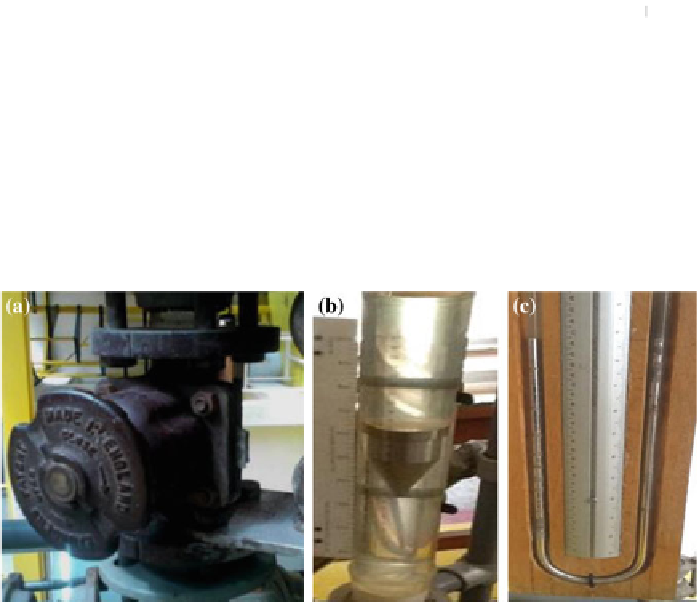Environmental Engineering Reference
In-Depth Information
L=36cm
D=4.7cm
d=1.6 cm
L=10cm
L=8.5cm
Fig. 3
Geometry and dimensions of the Venturi tube
Fig. 4
a
Flow control valve,
b
rotameter,
c
mercury manometer
3 Experimental Setup
The simulations were based in a device of the Chemical Engineering Laboratory
(Universidad de Guanajuato, México), with the geometry and dimensions as shown
in Fig.
3
.
The pressurewasmeasured for different volumetric fluxes. The fluxwas controlled
with a flow control valve (Fig.
4
a) and measured with a rotameter (Fig.
4
b). The dif-
ference of pressure was measured with a mercury manometer evaluating the pressure
in mercury millimeters (Fig.
4
c). The velocity was calculated by the volumetric flow
divided by the transversal area at the throat. The experiment was repeated five times.
4 Numerical Simulations
The numerical simulation was made using the DualSPHysics code that has been
developed on the C++ and CUDA platform for solving the equations on the CPUs and
GPUs processors. A 2D systemwas used in the simulation, with the same dimensions











































Search WWH ::

Custom Search